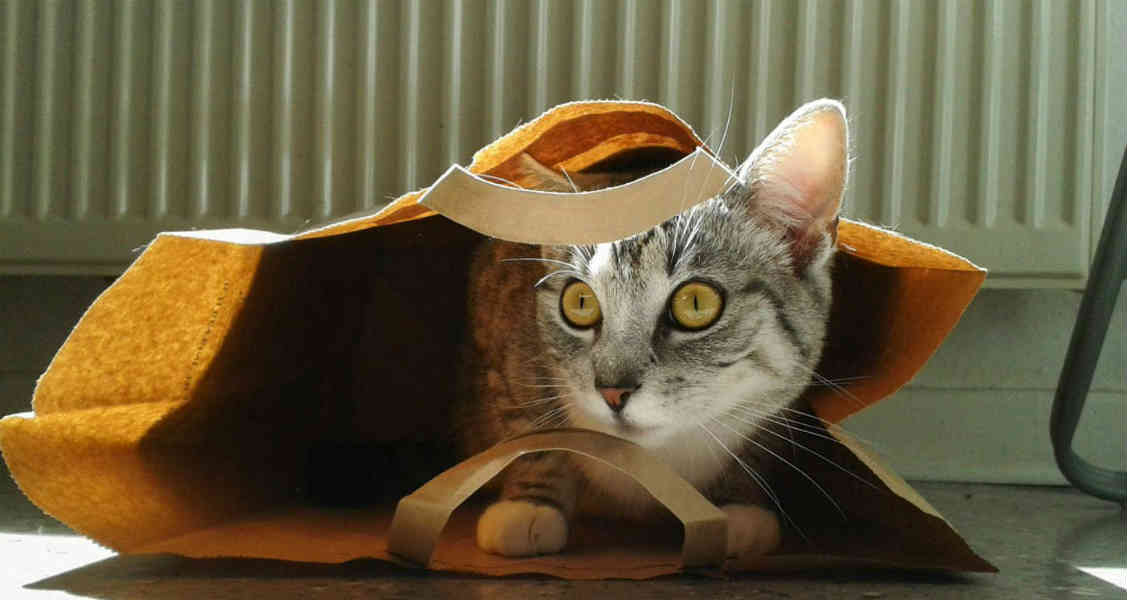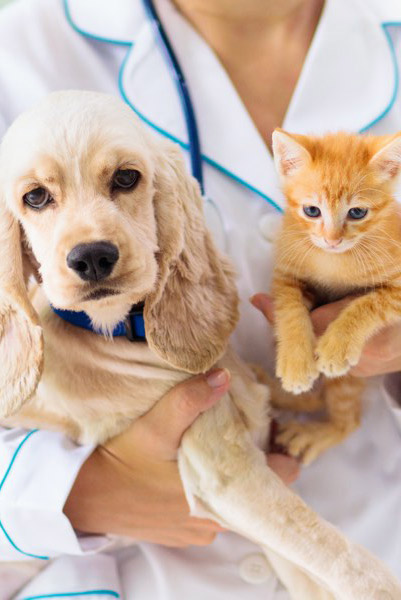The Top 10 Best Free Cat Toys
By: Dr. Clayton Greenway, B.Sc., DVM | Oct 31, 2016

It’s a proven fact that if you buy your cat an expensive new toy, they will ignore it while happily playing in the cardboard packaging. Save yourself the frustration and have some fun with your cat without spending a dime. DIY cat toys are also a great way to figure out what your cat enjoys before investing in a more durable version. Some cats love chasing after small, skittering toys while others prefer to leap after ‘birds’ on a string. Here are our top 10 best free cat toys that you can create without having to leave the house.
1. Cardboard boxes.
No cat can resist a cardboard box. Cut a few peepholes in a box large enough for them to hide in—or if your cat is anything like the famous Maru, let them go to town trying to squeeze into empty soda or cereal boxes. Produce boxes that already come with holes are especially fun.
2. Shoelaces.
A sturdy shoelace is a safer alternative to a thin piece of yarn and gives your cat something to sink their claws into. Try dangling it into a cardboard box or dragging it under the edge of a blanket or newspaper for your cat to uncover.
3. Crumpled/folded balls of paper.
For cats that love to chase, it doesn’t get any better than this. A small paper ball tossed for them to catch in the air or run after is going to be much easier on your wallet than hundreds of small crinkle toys. This is one of the best toys for cats home alone but be prepared to find lots of them under your couch when vacuuming.
4. An old sock, cotton and catnip.
Wondering how to make catnip toys? Take an old sock and stuff it with cotton and catnip with the end tied in a knot and voila! Can cats eat catmint? You bet! With some forward planning, you can have the catnip and catmint for free as they are perennials that are easily grown from seeds or starter plants in the spring. A large sock is especially great for cats that like to attack toys with their back feet.
5. Paper towel rolls and tissue boxes.
Hide a few treats or pieces of kibble inside a cardboard roll or tissue box for your cat to find. Be sure to remove the plastic from the tissue box first. For more determined cats, give them a bigger challenge by folding the ends of the cardboard tube inwards.
6. Wine corks and twine.
Drill a hole through a wine cork and thread a piece of twine through the hole, tying a knot at either side with a few inches left dangling. Chasing the rolling cork and clawing at the twine is especially fun in a hallway.
7. Ring from a plastic milk jug and strips of felt or cotton fabric.
Tie strips of fabric (roughly an inch wide) all the way around the plastic ring to make a sturdy, octopus-like toy for your cat to chase. This also works well dangled from a string.
8. A stick, cotton/sisal twine, and your imagination.
Tie the twine to cat toys you already have or attach a large feather, paper ball or DIY pom pom made of twine. Watch as your cat becomes a terrifying airborne hunter.
9. Dry food and a carpeted staircase or smooth floor.
This is a real win-win for cats that need to lose weight. Hold some dry food from their meals in reserve and let them chase the kibble down a carpeted staircase or smooth floor. If they enjoy it, they might also like a puzzle treat ball from the pet store.
10. DIY cat house.
This project is a bit more work, but with some cardboard boxes, a pencil, cutter, ruler and some glue, you can make a very cosy cat house. It’s been all over Pinterest for a reason!
As with most toys, supervise your pet at all times during play. Be especially careful to keep toys made with string out of reach when playtime is over. It’s important to always monitor how your cat plays with a new toy. Watch closely to make sure they are not attempting to swallow any of the material used in a new toy.
For a brief overview of our list of the 10 best free cat toys take a look at the clip below!


Disclaimer: healthcareforpets.com and its team of veterinarians and clinicians do not endorse any products, services, or recommended advice. All advice presented by our veterinarians, clinicians, tools, resources, etc is not meant to replace a regular physical exam and consultation with your primary veterinarian or other clinicians. We always encourage you to seek medical advice from your regular veterinarian.

